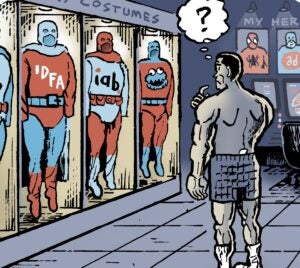 “Data-Driven Thinking” is written by members of the media community and contains fresh ideas on the digital revolution in media.
“Data-Driven Thinking” is written by members of the media community and contains fresh ideas on the digital revolution in media.
Today’s column is written by Eric Picard, CEO at Rare Crowds.
I had the great fortune to moderate a panel called “Programmatic Guaranteed” at AdExchanger’s recent Programmatic.io conference in San Francisco. The prep conversations for this panel, the conversation on stage and the conversations with audience members afterward were very compelling.
Clearly the market wants to figure this out, and the promise of programmatic means different things to different people. This is a complex space that needs more information and definition, which we’ll do today.
As an industry we have two primary “stacks” of technology that drive advertising between the buyer, seller and consumer. One is what I’ll call the “direct” stack, and the other is the real-time bidding (RTB) stack.
Direct Advertising Stack
The “direct” software stack in play supports publishers. This is the first-party ad sever, the publisher’s inventory management system. Examples include DoubleClick for Publishers, Open Ad Stream and Freewheel.
This publisher system enables publishers to manage their advertising businesses – in particular, this is designed around the need to put ads on pages, monitor revenue and manage sales. But one of the primary uses of these systems is for publishers to package their inventory. One of the core uses of this entire technology stack is to find inventory that is available for sale, and package it in order to sell it to advertisers.
The direct stack is a set of tools and technologies for packaging inventory for sale to buyers. Packages are assembled either in advance, or in response to a buyer’s request for proposal and media plan.
The Programmatic Direct Stack
Over the last few years, a variety of companies have launched in the programmatic direct space, which aims to connect the publisher’s direct systems to buyers’ systems – either the traditional or the programmatic tools. Examples here include YieldEx, iSocket, Shiny Ads, Bionic Ads and AdSlot.
The problem with this stack, from the buyer’s perspective, is that the programmatic direct world is an extension of the direct platforms. They are designed to package inventory according to the ways in which publishers want to sell inventory. They aren’t designed to allow the buyer to manage against their own goals. The contract terms for inventory are defined by the publisher, and executed according to a publisher-centric view of the world.
The benefit that buyers get from the direct stacks are that the inventory can be reserved — in other words, the publishers and buyers can agree in advance on not only the price of the inventory, but the volume and budget that the buyer is signing up to spend. And the publisher is willing to guarantee the buy, meaning that if they under-deliver, they will give the buyer a “make-good” on the inventory that was not delivered.
Programmatic RTB Advertising Stack
The RTB software stack is focused primarily from the point of view of the buyer. There are supply side platforms (SSPs) like Rubicon and Pubmatic that are publisher facing, but like their demand-side partners (DSPs), their focus is on enabling the buyer to find inventory according to their definitions, rather than packaging inventory up on the publisher side.
The systems in the RTB world are very flexible and don’t require packaging in advance. The only problem with this is the inability of these systems to easily offer a guarantee on the buy. There are some mechanisms that can be used, such as the Deal ID standard, which allows a buy-side system to be assigned to a specific ID in the sell-side system. But typically these are supported more by the SSP, and not within the direct stack of software.
There is an immense amount of investment in the ability to forecast and ultimately to sign reserved or even guaranteed deals in the programmatic RTB software stack, but we’re still a ways from this. We may find ourselves supported here in the next year or two – but matching these systems together has proven challenging – and recreating the ability to forecast and give make-goods in the RTB stack has been nearly impossible.
The ‘Holy Grail’
There is another path that some technology companies are exploring, which is the ability to push the advertiser’s demand goals directly into the publisher’s direct ad server. In this model, the buy-side system allows the buyer to specify their goals, and then through integration with the publisher’s direct ad server, can create line items matching the advertiser’s goals. But this is a new approach that has not been fully productized yet in the market. It will be interesting to see how this evolves.
Follow Eric Picard (@ericpicard) and AdExchanger (@adexchanger) on Twitter.













